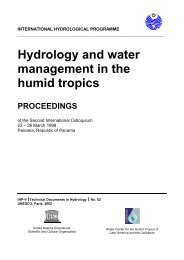FR AB - Science Reference
FR AB - Science Reference
FR AB - Science Reference
Create successful ePaper yourself
Turn your PDF publications into a flip-book with our unique Google optimized e-Paper software.
FIGURE 4<br />
removed using dilute TFA or acetic acid/trifluoroethanol/methylene<br />
chloride (AcOH/TFE/DCM). 4<br />
4. Two laboratories used Fmoc-Lys(Aloc)-OH. One<br />
of these samples contained multiple components,<br />
with the product of interest at only 12.5%. For this<br />
synthesis, the Aloc group must be selectively<br />
removed using Pd(0),Bu 3 SnH, 5 or Pd(0), HOAc,<br />
N-methylmorpholine in chloroform. 6<br />
5. Two laboratories constructed their peptides using<br />
t-Boc chemistry. In both of these samples, the<br />
FIGURE 5<br />
STRATEGIES FOR SYNTHESIS OF L<strong>AB</strong>ELED PEPTIDES<br />
Electrospray ionization mass spectrum of a submitted sample of AEGKLRFK(biotin) in which there was a caproyl<br />
linker between biotin and the C-terminal Lys.The three charge states detected for this peptide indicated a molecular<br />
mass of 1286 daltons.<br />
product of interest was the major component by<br />
HPLC.<br />
Overall, nine of the samples did not have the product<br />
of interest as the major component by HPLC.<br />
Two types of biotin were used by the participating<br />
laboratories: biotin and biotin caproate (b-c). The<br />
caproate arm increased the mass of the correct peptide<br />
to 1286 daltons (Fig. 4) and caused an extra peak<br />
in the amino acid analysis corresponding to the<br />
Amino acid analysis of a peptide constructed with a caproyl linker to biotin. An extra peak was observed at<br />
28.6 minutes between Met and Lys.<br />
JOURNAL OF BIOMOLECULAR TECHNIQUES, VOLUME 11, ISSUE 4, DECEMBER 2000 161















